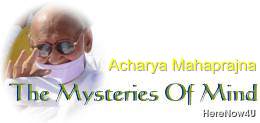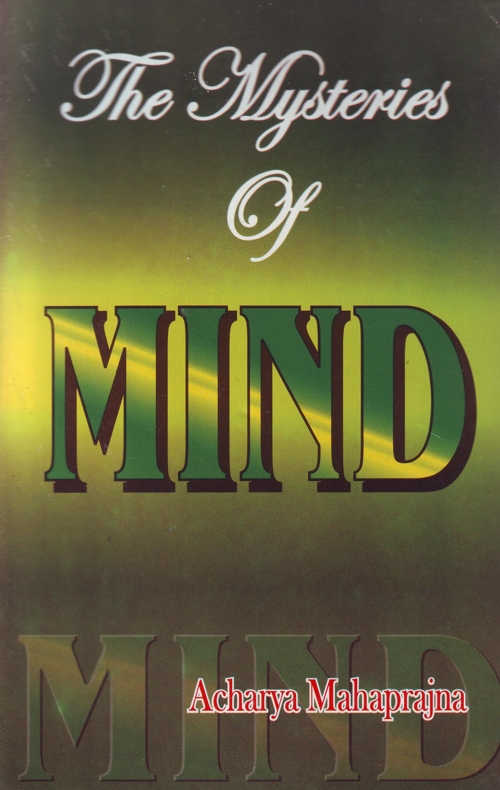
One of the stages we have to reach in our journey is the attainment of discernment. The order of the stages is:
| hearing, |
| knowledge, |
| discernment, |
| renunciation, |
| self-discipline, |
| stopping the influx of karma into the soul, |
| austerities, |
| eradication of the effect of past actions |
| non-action |
| emancipation. |
Vijnana means discernment i.e. the capacity to distinguish between what is desirable and what is not and what is to be taken up and what is to be discarded. This faculty will illuminate the entire path that we are traversing. It comes into operation after sravana and jnana have been attained. It dispels ignorance, which does not enable us to distinguish between what is desirable and what is not. We cannot enter into the stage of pratyakhyana (renunciation) until we have become enlightened by discernment. Having arrived at this stage, we will automatically give up what is undesirable. Dissociation with what is undesirable naturally results in self-discipline. Self-discipline leads to the state in which there is no further influx of karma. This state is called samvara. Self-discipline is the means of attaining a state in which foreign matter, which obstructs our spiritual progress, does not enter into us. The next stage of our spiritual progress, which is called tapa, (austerities) begins after this. We now begin to depend on our internal resources. A commotion begins within us. By means of tapa we achieve the next stage of our spiritual progress. This stage is called nirjara, which means the complete eradication of the adverse effects of past actions on us. Both samvara and nirjara are not means but ends to be achieved. Samvara is achieved by means of self-discipline and nirjara by means of tapa (austerities). When the adverse effects of the deeds we are doing and of the deeds we had done in the past have been fully washed off, we arrive at the stage where there is no further action. The deeds had been things external to the self. The stage we have arrived at is the stage of akriya (non-action). Our entire restlessness as well as our active tendencies cease and we achieve a state of complete stability. We become fixed in ourselves as it were, and nothing from within or without can disturb us any more. This state is the state of the emancipation of the soul, which is technically called Siddhi. In this state the soul becomes the seer and the knower par excellence. The pilgrimage we have undertaken is a pilgrimage to attain this end. The real nature of our being manifests itself in this state. It consists in complete perfection, freedom from all kinds of external intervention and self-knowledge.
The first lighthouse, which illumines our spiritual journey, is discernment. Preksha Meditation (Perceptive Meditation) and anupreksha (Contemplative Meditation) by the seeker for the self are meant for kindling the light of discernment without which the traveller cannot proceed even a single step forward. Between the current of vital energy, which keeps us living and the state of being a knower and a seer, lies the deep and impenetrable unconscious. No spiritual progress is possible until the barriers of the Unconscious have been breached and crossed.
Emotions, delusion, desires and lack of discernment are the four defence lines of the Unconscious. The mere conquest of our likes and dislikes or attachments and aversions are not enough to achieve the state of self-realization. We will have to launch a well-planned assault on the Unconscious. Lack of discernment is the deepest line of defence, which we will have to do away with first. The remaining three lines of defence are not very deep and strong and will be very easily broken. An assault on the first line of defence, i.e., lack of discernment is an assault on the very roots of our sorrows and afflictions. The first question we have to answer is how to mount the assault. What is to be our strategy? What exercises have we to do? What is the plan of our sadhana?
We have to begin with two kinds of exercises: the exercise of viveka-pratima (exercise in discernment) and kayotsarga-pratima (exercise in the abandonment of the body and full awareness). These exercises have to be performed for three to six months. When these have been done, we will be able to kindle the light of consciousness.
Viveka-Pratima (the exercise in discernment)
Keep sitting or standing in the posture of kayotsarga. Keep your mind calm. Avoid all kinds of thinking and just go on watching or experiencing the situation you are in. While thinking you are just on the surface of your being. Thinking does not take you into the depths of your being. Thoughts, which you think, are like the ripples, which come and go. Once you have begun to sink into the depths of experience, you will feel self-absorbed. In such a state anger will no longer disturb and torment you. Ordinarily when we are angry, our anger becomes associated with and gathers strength from our vital energy. But once we have begun to watch anger objectively instead of feeling it subjectively, it becomes cut off from vital energy and consciousness. It becomes something alien to our existence, a past event not connected with us any more. The emotion of anger melts away as soon as introspection begins. In this way a sort of transformation takes place in us. This transformation does not take place at the level of the conscious mind, which is a material entity. It takes place at the level of the Unconscious mind. When you are not thinking but experiencing your real existence, you will come to realize that anger, pride, greed, attachments and aversions are not the characteristics of your existence but ripples on the surface of your mind. In the depths of your being which you experience directly you are alone. This is the process of discernment. Go on eliminating anger, pride, greed, hatred, etc. one after another and when this elimination has been done, what remains is your real individual, self illuminated by the light of discernment. That is samyak darshana or right vision.
When the Gordian knot of the deep Unconscious has been cut, discernment becomes operative which brings the practitioner face to face with his self. For thousands of years man has been eager to know "who am I" and has failed to get an answer to this query. The answer is suggested by what is known as viveka pratima (the exercise in discernment) and it is 'I am that'. One should not apply his discernment as a human being but as a statue. One who is engaged in the search for the self must discern by becoming calm, stable and motionless like a statue. The concept of viveka pratima expressed in a figurative form is very much helpful in self-search.
Kayotsarga Pratima (Exercise in the abandonment of the body and self-awareness)
Kayotsarga means abandonment of the body. There is a term muyacca or mritarca in the Acaranga Sutra. It means the death of the body. It means that one cannot attain dharma (perfect stability) until one dies. It is a very significant idea.
The awakening of discernment is the first prerequisite of dharma (stability), which takes place only when one has been emancipated from the bondage of the body. Kayotsarga is the process of this emancipation. If you desire to live a real life, take your body to be as good as dead. The process of kayotsarga matures when a living being's attitude towards his body changes and when he comes to feel that he has physically died.
Kayotsarga is the process of death. It means making the body completely relaxed and immobile, so much so that it comes to have no inclination to be active in any way. Vibrations in the body and breath are the two symptoms, which show that the body is alive. Once these two have ceased, the body dies. In kayotsarga the vibrations of the body and breath become very feeble. It so appears that breathing has stopped. A calm body and feeble breathing imply the abandonment of the body. Kayotsarga is a process through which we arrive as the awakening of discernment. We come to feel that the body and breath do not belong to us and that our self is entirely different from them. Breath and existence, existence and breath, body and existence, existence and body, body and soul, soul and body—this duality is maintained by the Unconscious in the form of a false identity. Breath and body are separated from existence or the soul by this false identity. Once it is clear that the body with all its characteristics has been abandoned by us, all the tendencies and impulses of the body come to a stop so much, so that sometimes we begin to feel, as if the body has disappeared. This is not something unnatural. It does very often happen in the practice of kayotsarga, which is the process of arriving at this sense of distinction.
A spiritual practitioner once approached an acharya (preceptor) and complained that he was not able to get rid of this delusion, pride and egotism. He went on showering question after question on the acharya who listened to him with a calm mind. Then he asked the practitioner not to disturb him with his questions any more. He exhorted the questioner to perform an exercise in which he should go on thinking that the body and the soul are two distinct entities.
The practitioner departed and engaged himself in the exercise earnestly and vigorously. Then he again came to the preceptor who asked him if he had any more questions to ask. The practitioner replied that he had none and that all his doubts had been removed.
There are doubts and misgivings in us only till we stand on the plane of the intellect. Once we have ascended on the plane of experience they subside. Hearing what others say about knowledge and knowledge itself are a matter of intellectual concern. Vijnana or discernment stands on a higher plane. Sadhana or self-exertion begins with the rise of discernment and leads to experience. The practitioner has to perform a number of exercises before he can arrive at Truth.
Viveka-pratima and kayotsarga are the two means of achieving Right Vision. Let us now consider what the consequences of discernment or enlightenment are. Discernment produces the following:
- Calmness. You cannot achieve calmness without making a distinction between what is desirable and what is not. Right Vision enables you to make this distinction.
- An earnest desire for freedom or emancipation. He who desires to be emancipated would never like to be conditioned in any way. There is no peace in a conditioned life, which is not free from attachments.
- Detachment in every walk of life from the beginning to the end as well as not to be attached to any path.
- Karuna or compassion and freedom from all kinds of cruelty. This develops the spirit of friendliness towards every one.
- Dedication to truth and freedom from all kinds of falsehood.
An enlightened person who has the power of discernment will achieve Right Vision, which enables him to perceive his real existence.
 Acharya Mahaprajna
Acharya Mahaprajna

